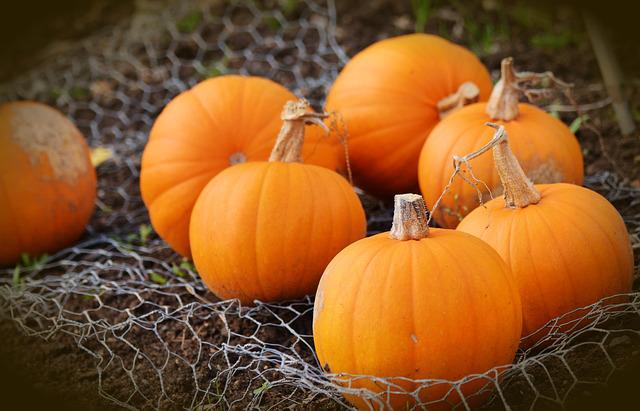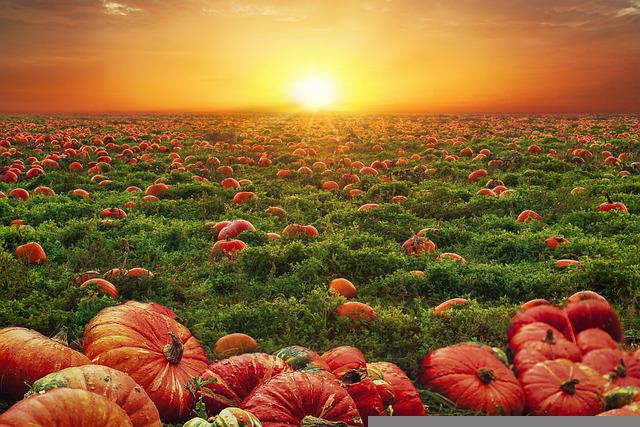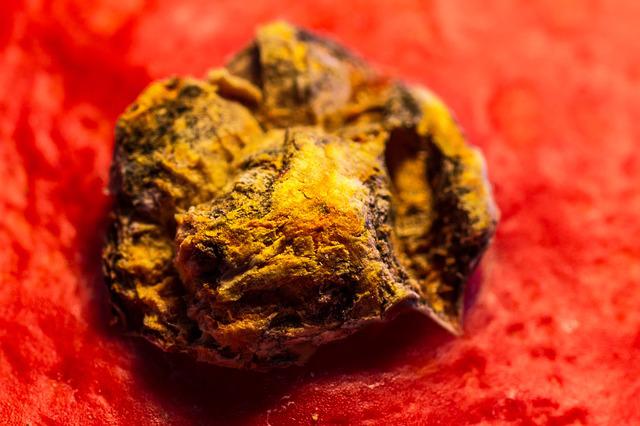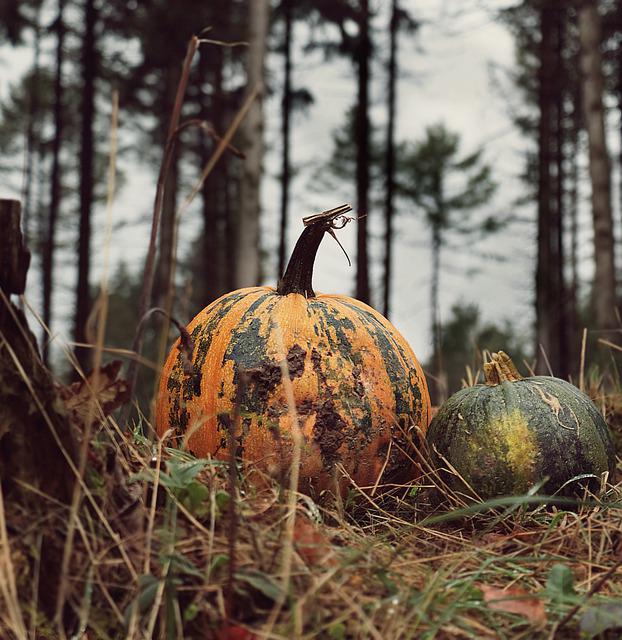Do Pumpkins Grow Underground?

Pumpkin grows above ground, although a portion of its plant will have underground roots. Some people believe that pumpkin plants grow underground, but they don’t. The seeds germinate above the ground and are covered by a green leafy layer. At the same time, they develop further roots, which descend into the soil below until finally breaking from their stem to produce rootlets below.
Table of Contents
How Are Pumpkins Cultivated?
Add Organic Material
It’s not unusual to see strong pumpkin plants tumbling out of the compost pile, and many gardeners find that these pumpkins do much better than the vines growing in the garden, which are cared for more. Part of the reason for this is that pumpkins love to grow in places with a lot of organic matter.
To give your pumpkins the lush environment they want, do the following:
- Dig a hole in the spot where you want your pumpkins to grow. Make the hole about one foot deep and between one and three feet wide.
- Mix compost or manure with the native soil and use that to fill in the hole.
- Pile the rest of the mixture on top of the hole. Later in the growing season, some larger fruiting varieties may need a side-dressing of compost every three weeks.
Check Soil
An updated soil test can reveal the nutrient levels, pH, and organic matter in the soil. Many soil test reports recommend how to improve the soil for pumpkins. It’s best to use a soil test to plan your fertilizing regimen, as adding too much fertilizer can cause pumpkins to focus more on vegetative growth than flowering and fruiting, cause fruit to split, and lead to disease problems.
Implement Crop Rotation
In addition to pumpkins, the cucurbit family includes squash, zucchini, cucumbers, watermelon, and cantaloupe. These members of the same family may be susceptible to the same pest and disease problems. Insect pests and their eggs and bacterial, fungal, and viral diseases may spend the winter in the soil. If you grow your pumpkins in a location where cucurbits have been grown in the past few years, it will be much easier for pests and diseases to locate them. Each year, group your pumpkins with their cucurbit relatives in a different location to give them the best possible start.
Pumpkin Growing & Care Tips
Once pumpkins start growing, watch the water, spread mulch, protect pollinators, hand-pollinate if needed, and check for health issues.
Sunlight
Pumpkins need at least six hours of direct, unfiltered sunlight per day to thrive. Another benefit of sunlight is that it aids in drying leaves. When the sun hits the leaves early in the morning, the dew is quickly evaporated.

Water As Needed
A thirsty pumpkin will shed its blossoms and lose its fruit to conserve water. Get a soaker hose or drip line to deliver water directly to the plant’s roots. It is nearly impossible to avoid getting water on the leaves when watering pumpkins, which increases the risk of downy or powdery mildew disease.
Mulch the Ground
A thick layer of straw should be laid on top of the newspaper or cardboard to keep weeds at bay and raise the fruits above the soil level. Mulch can help keep soils cooler than bare earth if applied when soil temperatures are at least 75 degrees Fahrenheit. It’s important to keep weeds at bay, conserve water, and raise fruits above the soil with a thick layer of mulch. Use it as a mulch on top of the garden bed rather than tilling the cover crop residue into the soil when planting pumpkins.
Make sure the ground beneath the pumpkin is dry by laying a shingle or cardboard down there. Rotate the fruit a few times to ensure that the pumpkin is evenly shaped and colored. It’s better to have a lopsided pumpkin than no pumpkin, so be careful not to damage the stem or vine.
Sprouting Pumpkins
A monecious plant produces both male and female flowers on the same plant. In most varieties, male flowers appear first, but female flowers can appear weeks after the male flowers have appeared. The petals are large and yellow in both male and female flowers, but the female flowers will have a small, immature fruit behind the petals.
Bees pollinate the flowers of pumpkins. You may have a problem with pollination if your pumpkin plant continues to lose its immature pumpkins. Pesticides will poison bees and other pollinators, so avoid using them.

Pollination Techniques for Pumpkins
Rub the male flower’s pollen-covered stamen on a female flower’s pistil to pollinate. The stamen and pistil are both located in the center of each flower, so they’ll be easy to find.
Inquire About Health Concerns
Squash vine borers, pickle worms, squash bugs, cucumber beetles, powdery mildew, downy mildew, anthracnose, and bacterial wilt are just a few pest and disease problems that affect pumpkins. Drought, poor drainage, and waterlogged soils make pumpkin plants more prone to disease, as does a lack of light. The best way to keep your plants happy is to give them what they need to thrive, such as a well-distributed supply of nutrients, regular crop rotation, good sanitation, and companion planting.
How to Pick Pumpkins
Pumpkins should only be harvested when fully mature, especially if they will be stored or displayed for several weeks. Ripe pumpkins should be fully colored and have dull, waxy skin. The fruit’s exterior should be so tough that it cannot be pierced with a thumbnail.
Wet pumpkins may not be able to be stored for as long as dry ones. Using pruning shears or a sharp knife, cut the stem about 3 inches above the fruit. Typically, pumpkins with a few inches of stem attached store much longer than those without a stem.
Pumpkins can withstand a light frost; the vines may die, and the plants may stop growing, but the fruits should be fine. However, freezing temperatures can wreak havoc on fruit, causing it to rot. If cold weather is predicted, harvesting may proceed.

